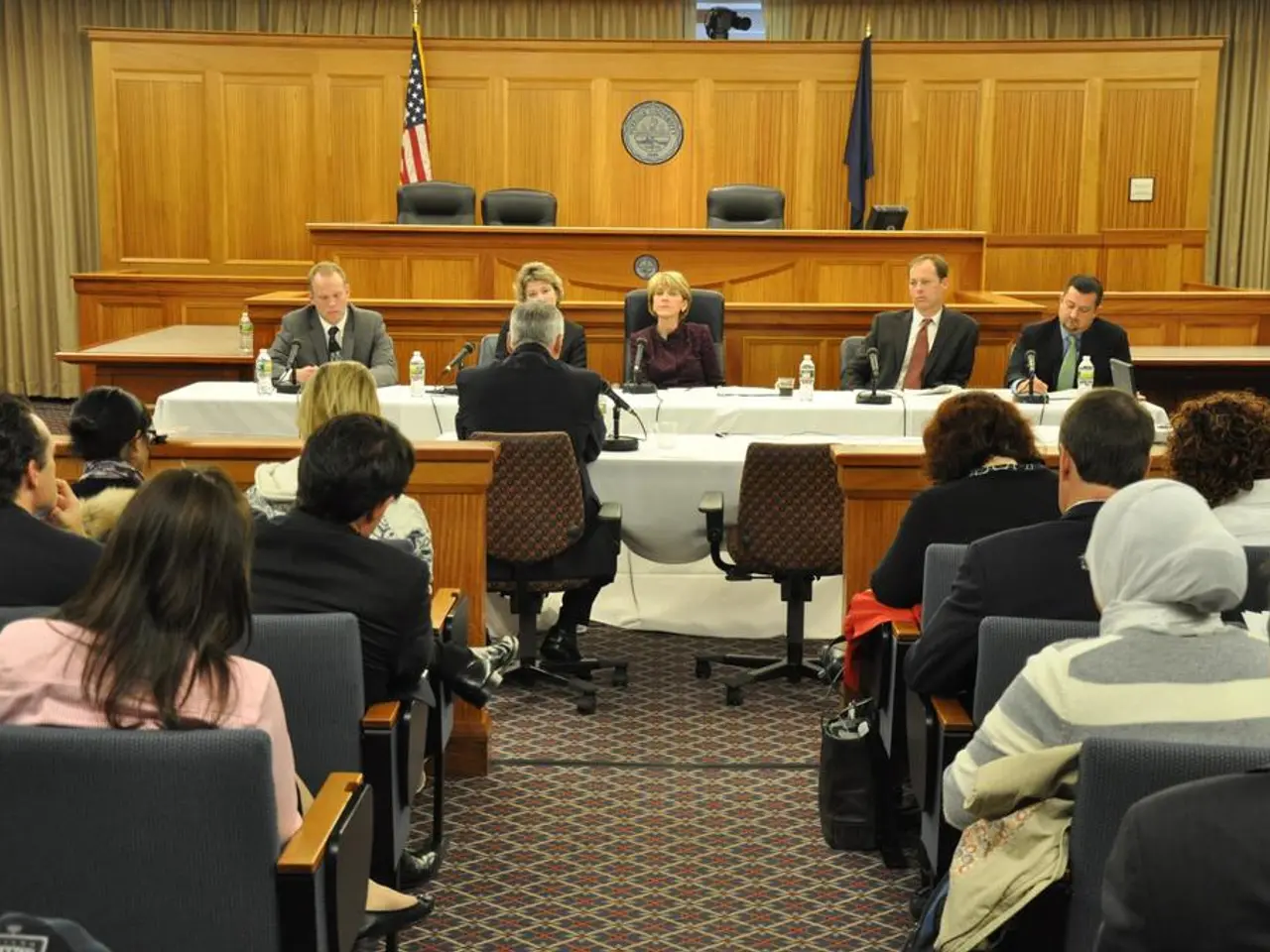Productive Gatherings within Alliances
In the realm of coalition work, conducting meetings efficiently and effectively is crucial. Here's a guide to help you manage and lead coalition meetings successfully.
Agenda Creation
A well-prepared agenda is the foundation of any successful meeting. Create a clear agenda in advance, outlining specific decisions or outcomes needed from the meeting. Share any pre-work or necessary documents with participants several days before the meeting. Allocate time for each topic, schedule breaks, and adjust if topics run over time. Appoint a meeting manager or facilitator responsible for crafting the agenda, enforcing rules, keeping discussion focused, and encouraging participation from quieter members.
Time Management
Begin meetings by clarifying the decision or goal the meeting should achieve to keep conversations purposeful. Encourage participation from all relevant parties and actively invite input from those less vocal. Avoid tangents or side conversations by politely pausing them and taking them offline if not relevant to the full group. Use signals or agreed-upon words to manage conversation flow, such as "Delegate" for issues to be resolved at a lower level, or "Telephone" for topics needing input from others not present.
Decision-Making
Employ structured approaches in problem-solving and decision-making meetings. Define problems clearly, identify priorities and potential threats, brainstorm solutions, and vote on options where appropriate. Encourage critical evaluation of proposed ideas to surface potential issues and improve outcomes. A facilitator should summarize understandings during discussions to maintain alignment and clarify decisions as they evolve.
Follow-Through on Action Items
Assign someone to take detailed notes or minutes, capturing decisions, rationales, and action items clearly during the meeting. After the meeting, circulate a written summary including agreed-upon actions, responsible parties, and deadlines to all participants. Maintain flexibility in roles and alliances within the coalition to adapt to shifting interests or BATNAs (Best Alternatives to Negotiated Agreements) as negotiations proceed. Use communication tools or platforms to store and track progress on action items, ensuring accountability and easy reference for coalition members.
Appointing a meeting manager or coalition coordinator can help tame the complexity of multi-party meetings and ensure effective process management. This structured approach combines planning, facilitation, inclusive participation, disciplined time use, clear decision protocols, and diligent follow-up to build trust and drive coalition success.
For conference calls and video meetings, ensure all members have access to a telephone with the speakerphone feature, a computer with an Internet connection, a webcam, speakers, and a microphone. Test all equipment before the start of the meeting. Identify yourself before speaking, look into the monitor when speaking in a video meeting, and speak in a normal tone and at a normal volume.
Stay on the line for the entire call, or let others know at the beginning that you will need to leave early. The meeting agenda should include the date, time, and place of the meeting, the main purpose, agenda items with responsible parties and time limits, the date and time of the next meeting, and any special upcoming meetings or events. Be present, pay attention, and set aside other tasks during the meeting. Wait for others to finish before speaking, and suggest that stretch or activity breaks be incorporated into meetings that are over an hour in length.
Healthy food items can be recommended to serve at meetings and events. Clear communication of goals and priorities can help speed up the decision-making process. Examples of healthy meeting guidelines and assistance in guideline writing may be available from local Extension offices, local health departments, and other local nonprofit organizations.
Conference calls and video meetings follow meeting agendas and are led by meeting facilitators. Conference call and video meeting etiquette is similar to general meeting etiquette, although there are a few extra things that members should do to ensure they are clearly heard and understood by others on the call. Choose a quiet location with minimum background noise for meetings, and call in early so that the meeting can start on time.
This article serves as a comprehensive guide to managing and conducting coalition meetings effectively. By focusing on agenda creation, time management, decision-making, and follow-through on action items, you can build trust, drive coalition success, and streamline the coalition meeting process.
- In the realm of rural development, effective community meetings could follow this guide to manage and lead discussions successfully, helping to foster growth and improve lifestyle.
- For those involved in education-and-self-development initiatives, this meeting management strategy could be utilized to ensure progress towards fashion-and-beauty or lifestyle changes, taking into account relationships and personal growth.
- In the realm of home-and-garden, this structured approach to collaboration could be applied during a meeting to discuss renovation projects, collaborating on designs, and setting deadlines for implementation.
- For travel enthusiasts planning a community expedition, this guide to efficient meetings might prove beneficial for coordinating itineraries, sharing travel experiences, and addressing any concerns.
- When it comes to sports teams looking to expand their operations, this meeting management strategy could be used in strategic discussions, such as figuring out sponsorships, planning tournaments, or analyzing competitor strategies.




